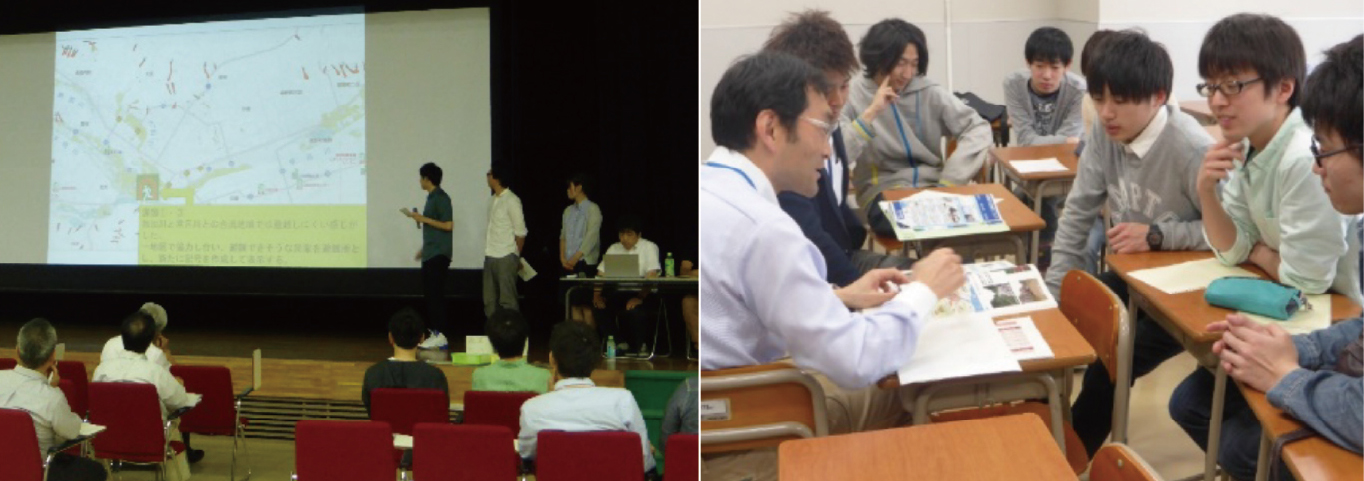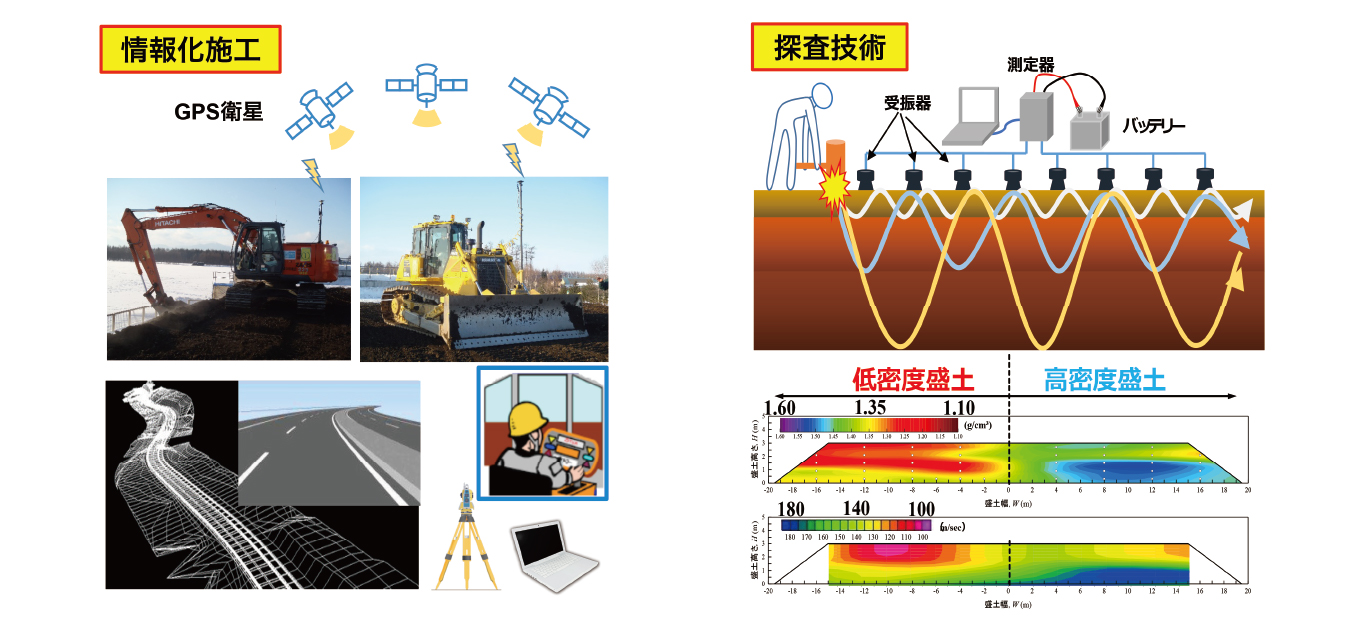Academics
School of Regional Innovation and Social Design Engineering
Civil Infrastructure Course Program
The course program aims at nurturing professional engineers who can engage in the design,
construction, maintenance and management of social infrastructure for creating the future of the
region such as “lifeline systems in cold regions,” “an advanced information and communications society” and
“infrastructure facilities suitable for the region” to cope with a chronically low birthrate and a rapidly aging society.
Faculty Interview

Kiyoshi TakahashiProfessor
◎Profile: ompleted the latter period of a civil engineering doctorate at the Graduate School of Engineering, Hokkaido University. Research interests include urban and transportation planning.
Be curious and accept diversity.
Also, acquire a “thinking engine” by enhancing
the power of perception.
In this course, students learn about “lifelines in cold regions,” “advanced information and communication society” and “designing, building, maintaining and managing infrastructure suitable for each region” in Japan’s rapidly aging society with a chronically low birth rate. The aim is to foster students who aspire to be employed by construction and construction consulting firms or to become public servants engaged in the management of urban or regional civil infrastructure, by offering fundamental civil infrastructure classes on advanced technologies for managing construction processes, CAD, remote sensing and ICT technologies. The engineering domain is broad and deep, and all aspects are useful for enriching our lifestyle. I believe KIT can offer something that students want to aim at for the rest of their life. It is very much hoped that students will disseminate their ideas and technologies to the world through KIT.
Curriculum
- Regional and City Planning
- Fundamental Signal Processing
- Surveying
- Force and Deformation in Structural Mechanics
- Construction Materials in Cold Regions
- Exercise in Computer Aided
- Drawing for Civil Infrastructures
- Cold Regions Soil Mechanics I
- Introduction to Hydraulics
- Traffic Infrastructure Engineering
- Practical English
- Geospatial Surveying Practice
- Experiments on Civil Infrastructure Engineering I, II
- Integrated Study in Okhotsk Region I, II
- Glaciology
- Hydraulic Engineering
- Cold Regions Soil Mechanics II
- Force and Energy Principles in Structural Mechanics
- Reinforced Concrete Structure
- Digital Communication Engineering
- GIS Practice for Civil Infrastructure
- Mathematical Methods for Planning
- Highway Environmental Engineering
- Water Environmental Engineering
- Remote Sensing
- Numerical Calculation
- Ice Covered Sea Engineering
- Project Evaluation Engineering
- Prestressed Concrete and Hybrid Structure
- Structural Analysis
- Construction Technology
- Snow and Ice Disaster Prevention Engineering
- River Engineering
- Harbor Engineering
- Water and Wastewater Treatment Engineering
- Bridge Design and Drafting
- Integrated Study of Career Advancement
- Hydrology
- Explosives Engineering
- Infrastructure Management
- Applied Ecological Engineering
- Bachelor’s Thesis
*The description refers to the 2020 academic year curriculum and is thus subject to change.
Lecture
-
Integrated Study in Okhotsk Region I, II
Students identify problems facing the Okhotsk region through
classes by guest lecturers, their own investigations and
brainstorming sessions and by finding effective solutions
through teamwork.
-
Construction Technology
Students acquire basic knowledge about designing and constructing soil structures, which are important and fundamental aspects of civil infrastructure, and learn how to manage construction work using ICT construction and other technologies.

